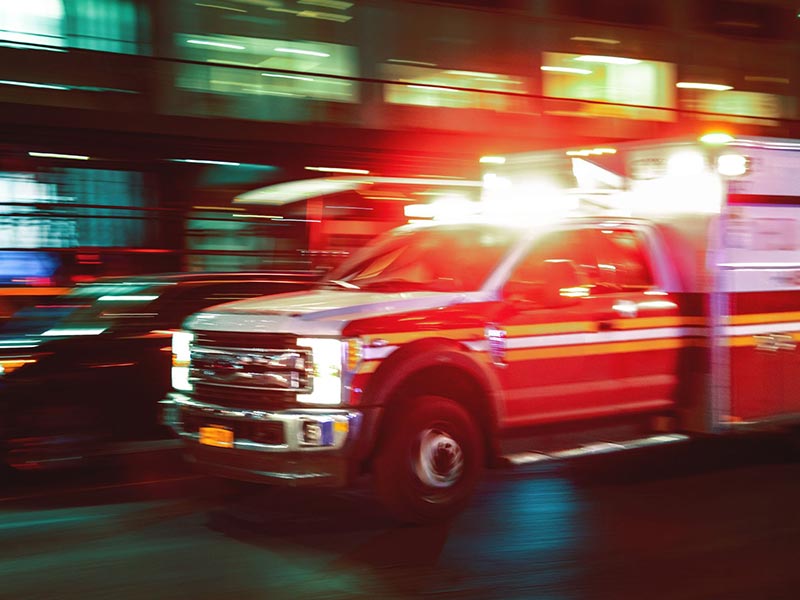
What Does An Ambulance With Lights But No Siren Mean In Malaysia?
An ambulance with lights but no siren usually means that the ambulance is responding to an emergency, but not necessarily with the urgency that would require the use of a siren. This could be the case in situations where the ambulance is transporting a patient who is not in critical condition, or when the ambulance is responding to a call in an area with low traffic or noise levels. However, it’s important to note that the use of lights and sirens by emergency vehicles is regulated by law and can vary by jurisdiction.
What Are The Scenarios Where An Ambulance Will Turn Lights On But Not The Sirens In Malaysia?
There are several scenarios where an ambulance may turn on their lights but not their sirens, including:
- Transporting a stable patient: If an ambulance is transporting a patient who is stable and does not require immediate medical attention, they may use their lights to signal their presence on the road without causing unnecessary noise pollution. This also to avoid disturbing the peace in residential areas during late hours.
- Low-traffic areas: In areas with low traffic or noise levels, an ambulance may use lights but no sirens to avoid causing unnecessary disturbances.
- Non-emergency situations: If an ambulance is responding to a non-emergency situation, such as transporting a patient between medical facilities or conducting a routine medical check-up, they may use their lights but not their sirens.
- Code Yellow or Code Green: In some emergency medical services (EMS) systems, a “Code Yellow” or “Code Green” response may be used for less urgent calls. These codes may require the use of lights but not sirens to signal the ambulance’s presence.
It’s important to note that the use of lights and sirens by emergency vehicles is regulated by law and can vary by jurisdiction. Ambulance crews are trained to use their best judgment in determining when to use lights and sirens based on the specific circumstances of each situation.
You might be interested: Motorcycle ambulance
Why Does The Ambulance Turn On The Siren But Not The Lights In Malaysia?
It is very rare for an ambulance to turn on its siren without also turning on its lights. The use of both lights and sirens together is the standard protocol for emergency medical services (EMS) vehicles, as it helps to alert other drivers and pedestrians of the ambulance’s presence on the road and signal that urgent medical assistance is needed. However, it is possible that a malfunction or issue with the ambulance’s lighting system could cause the siren to be used without the lights. In any case, the use of sirens and lights by EMS vehicles is regulated by law and is intended to be used only in emergency situations when urgent medical attention is required.
More: Find out why ambulance is written in reverse.
What Are The Different Types Of Ambulance Responses And When To Use Lights And/Or Sirens In Malaysia?
There are three main types of ambulance responses, each with its own protocol for using lights and sirens:
- Emergency Response: In this type of response, the ambulance uses both lights and sirens to respond to a medical emergency with the highest level of urgency, such as cardiac arrest, severe trauma, or respiratory distress. This type of response is designed to get to the patient as quickly as possible and provide immediate medical care.
- Urgent Response: This type of response is used when the patient’s condition is not immediately life-threatening, but still requires prompt medical attention. The ambulance may use lights and sirens during an urgent response, but it is typically not as urgent or time-sensitive as an emergency response.
- Non-Emergency Response: This type of response is used when the patient’s condition is stable and not considered to be life-threatening. During a non-emergency response, the ambulance may use only lights or no lights at all, depending on the situation.
The decision to use lights and sirens during an ambulance response is typically made by the ambulance crew or dispatcher, based on the urgency of the situation and the potential risks involved. It is important to note that the use of lights and sirens on emergency vehicles is regulated by law and must be used responsibly and appropriately to ensure the safety of everyone involved.
More: Does ambulance has speed limit?
What Are The Legal Regulations Regarding The Use Of Lights And Sirens On Emergency Vehicles In Malaysia?
In Malaysia, the use of lights and sirens on emergency vehicles is regulated under the Road Transport Act 1987 and the Road Transport (Construction and Use) Regulations 1986. According to these regulations, emergency vehicles such as ambulances, police cars, and fire trucks are allowed to use lights and sirens only when responding to an emergency or when transporting patients who require urgent medical care.
The more you know: History of ambulance in Malaysia
The law requires emergency vehicles to exercise due care and caution when using lights and sirens and to ensure that they do not pose a danger to other road users. Additionally, emergency vehicles must obey traffic rules and regulations, such as stopping at traffic lights and not driving recklessly, even when using lights and sirens.
The regulations also state that emergency vehicles must have properly functioning warning devices, including lights and sirens, and that these devices must be maintained and tested regularly to ensure they are in good working order.
The use of lights and sirens on emergency vehicles in Malaysia is strictly regulated and must be used responsibly to ensure the safety of everyone on the road.
Elmer Ambulance is a provider of ambulance Malaysia services. Choose our reliable ambulance service in Malaysia for fast, professional medical transportation. Our highly trained team is available 24/7 with state-of-the-art equipment and vehicles to ensure safe transportation to hospitals or medical facilities. Trust us for compassionate care and timely transport.
